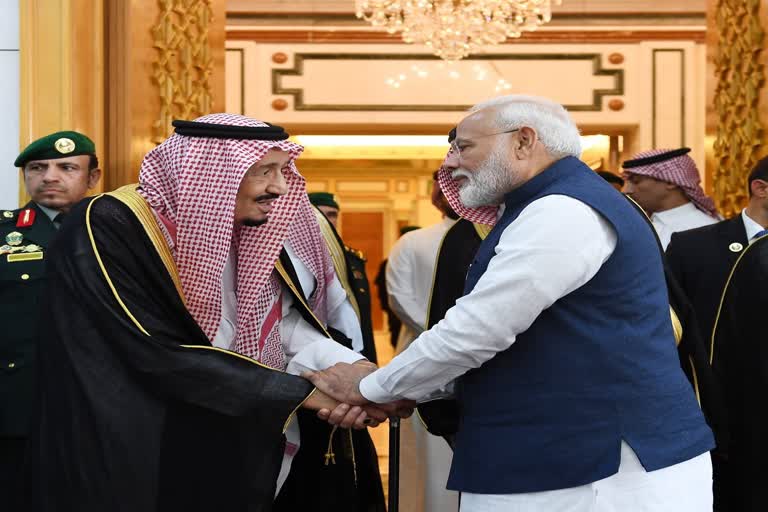New Delhi: Prime Minister Narendra Modi last week made his second visit to the kingdom of Saudi Arabia, a key player in India’s energy security needs. The first one was in April 2016. The economic ties between the two sides has been on the upswing over the last few years.
As a country dependent on imports for as much as 80 percent of its crude requirements, to strengthen its energy security India is scouting for reliable sources of oil imports at stable prices. Saudi Arabia can fit in neatly in those plans. With the US moving towards self-sufficiency on oil, India and China will remain the leading importers of crude.
In 2018-19, Saudi Arabia sold 40.33 million tonnes of crude oil to India. Second, to Iraq, Saudi Arabia is the largest source of crude oil imports for India. Nearly 18 percent of crude oil is imported from it. The third-largest energy consumer after the U.S. and China, India buys about 200,000 tonnes of LPG, or 32 percent of its total requirement, every month from Saudi Arabia.
The pacts that were signed between the two sides during Prime Minister Modi’s two-day visit can potentially lift India and Saudi Arabia’s energy ties to a whole new level – of a strategic partnership from the pure oil buyer-seller equation so far. Of these, the preliminary agreement between Indian Strategic Petroleum Reserves Ltd and Saudi Aramco will result in a bigger Saudi role in the upcoming second fuel reserve facility at Padur, Karnataka.
Last year, New Delhi had approved strategic petroleum reserve (SPR) facilities in Chandikhol in Odisha and Padur for 6.5 million metric tonnes (MMT) in addition to the planned crude oil reserves at three locations—Visakhapatnam (1.33 MMT), Mangaluru (1.5 MMT) and Padur (2.5 MMT).
The other agreement was signed by the West Asia unit of Indian Oil Corp. Ltd and Saudi Arabia’s’ Al Jeri company for cooperation in the downstream sector, including the setting up of fuel stations in the kingdom. These investments in India’s value chain of oil and gas projects – from oil supply, marketing, refining to petrochemicals and lubricants – will further increase energy cooperation between the two countries.
Saudi Arabia’s national oil company, Aramco, and United Arab Emirates’ national oil company Abu Dhabi National Oil Company (ADNOC), closed a trilateral deal with a consortium of Indian state-run refiners for a 50 per cent stake in a refinery planned at Raigarh, Maharastra on India’s west coast with capacity of 1.2 million barrels-per-day. The project is set to be the world's largest greenfield refinery.
Saudi Arabia is honouring its committed investments, despite the series of drone and missile attacks on oil facilities of Saudi Aramco on September 14, that impaired half of its daily production, severely disrupting the global oil market.
The strategic nature of the growing energy ties is also reflected in the proposed partnership between Reliance Industries Ltd and Aramco.
Oil and non-oil bilateral trade stood at $27.48 billion in 2017-18, making Saudi Arabia India’s fourth-largest trading partner.
The non-oil dimension of the economic ties is strong too. The Kingdom’s largest expatriate community is the 2.6 million strong Indian diaspora there that repatriate roughly $18 billion in remittances every year.
Besides labour, the scope for capital flows is also tremendous. For the region’s wealth funds and petrodollars in search of attractive returns, India is a key emerging-market destination with growth – and therefore returns – potential few economies can match. One of the world's richest sovereign reserves, the Public Investment Fund, is Saudi Arabia 's primary venture vehicle. During his just-concluded visit, PM Modi delivered the keynote at its Future Investment Initiative (FII) forum, an investment summit dubbed as 'Davos in the Desert'.
In September, Saudi Arabia had announced plans for investing up to $100 billion in India across sectors, including energy, refining, petrochemicals, infrastructure, agriculture, minerals, and mining. It has identified more than 40 opportunities for joint collaboration and investments.




